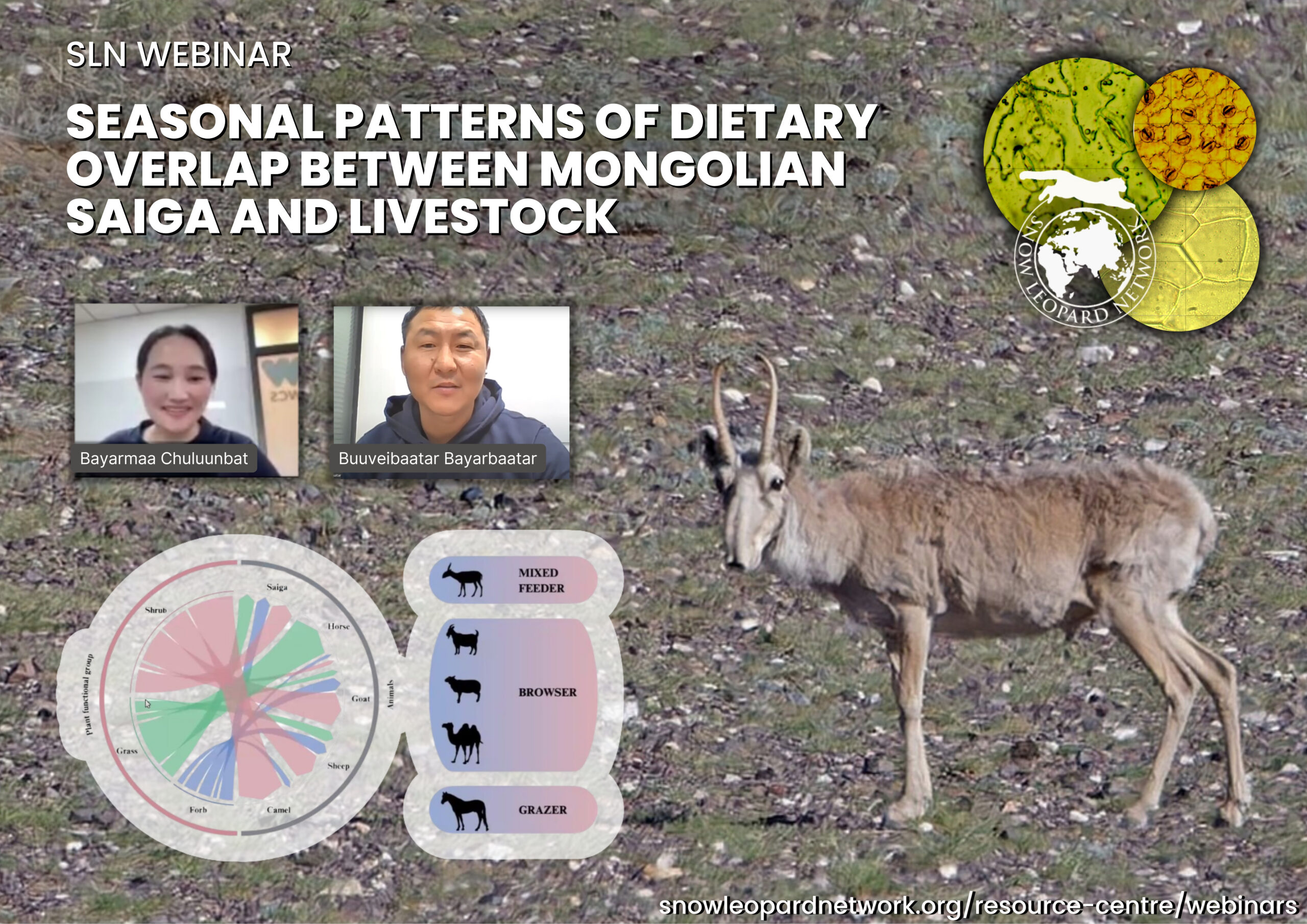Understanding the diet composition of animals is essential for comprehending their ecology and developing effective conservation strategies, especially for endangered species. In the depressions of Great Lakes of western Mongolia, the critically endangered Mongolian saiga coexists year-round with livestock. This research aims to determine the seasonal dietary overlap between the Mongolian saiga and livestock using the microhistological method.
Bayarmaa Chuluunbat, WCS – Mongolia has also created a microhistological reference key for over 120 different plant species in the steppe and desert steppe. This key is vital for determining the diet of herbivores and understanding their dietary habits in these regions. Given the widespread practice of livestock husbandry in Mongolia, understanding the dietary habits and overlaps between wildlife and livestock is crucial for conservation efforts and rangeland management. This is particularly important for endangered ungulates, many of which are found in the steppe and desert steppe. Additionally, these regions are significant for snow leopard conservation, as their diet includes these herbivores.

